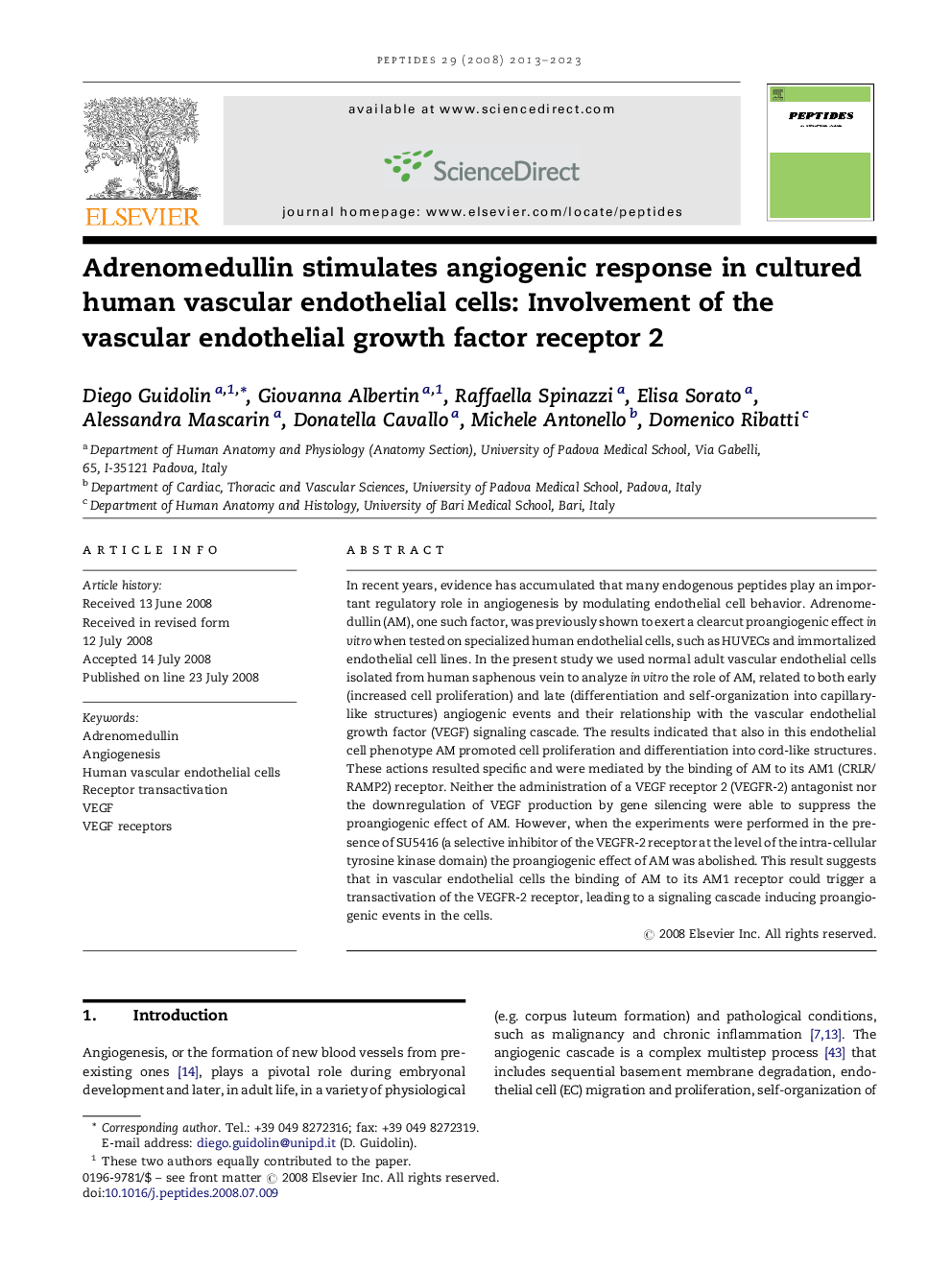| Article ID | Journal | Published Year | Pages | File Type |
|---|---|---|---|---|
| 2007489 | Peptides | 2013 | 11 Pages |
In recent years, evidence has accumulated that many endogenous peptides play an important regulatory role in angiogenesis by modulating endothelial cell behavior. Adrenomedullin (AM), one such factor, was previously shown to exert a clearcut proangiogenic effect in vitro when tested on specialized human endothelial cells, such as HUVECs and immortalized endothelial cell lines. In the present study we used normal adult vascular endothelial cells isolated from human saphenous vein to analyze in vitro the role of AM, related to both early (increased cell proliferation) and late (differentiation and self-organization into capillary-like structures) angiogenic events and their relationship with the vascular endothelial growth factor (VEGF) signaling cascade. The results indicated that also in this endothelial cell phenotype AM promoted cell proliferation and differentiation into cord-like structures. These actions resulted specific and were mediated by the binding of AM to its AM1 (CRLR/RAMP2) receptor. Neither the administration of a VEGF receptor 2 (VEGFR-2) antagonist nor the downregulation of VEGF production by gene silencing were able to suppress the proangiogenic effect of AM. However, when the experiments were performed in the presence of SU5416 (a selective inhibitor of the VEGFR-2 receptor at the level of the intra-cellular tyrosine kinase domain) the proangiogenic effect of AM was abolished. This result suggests that in vascular endothelial cells the binding of AM to its AM1 receptor could trigger a transactivation of the VEGFR-2 receptor, leading to a signaling cascade inducing proangiogenic events in the cells.
